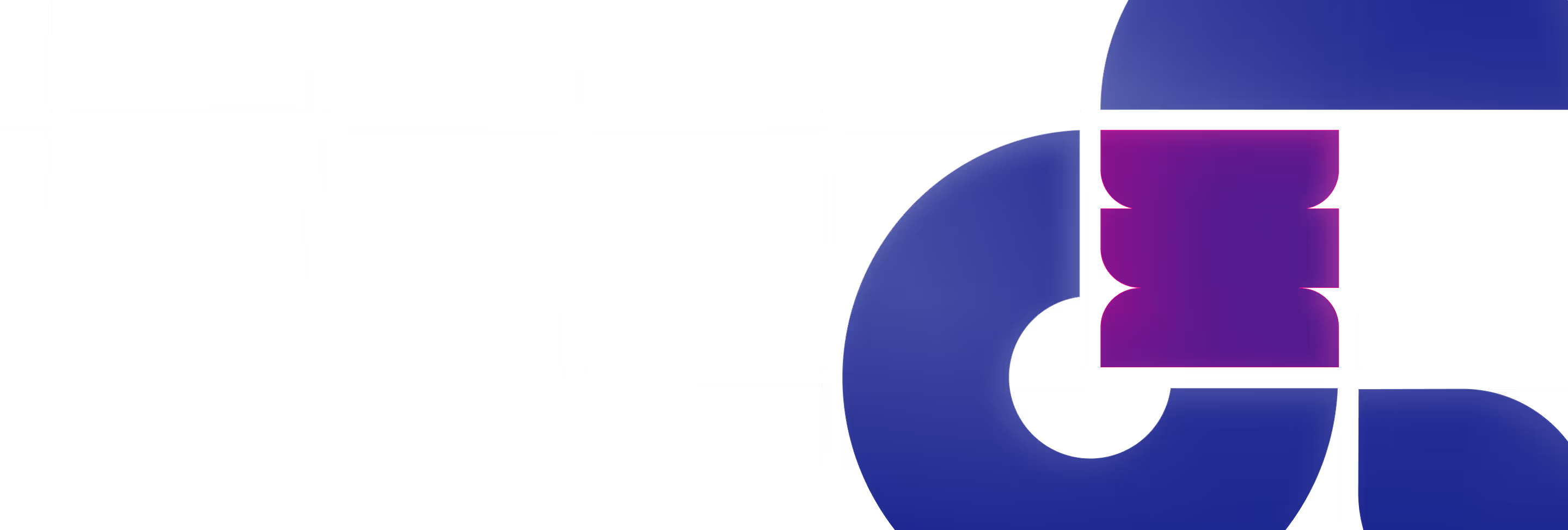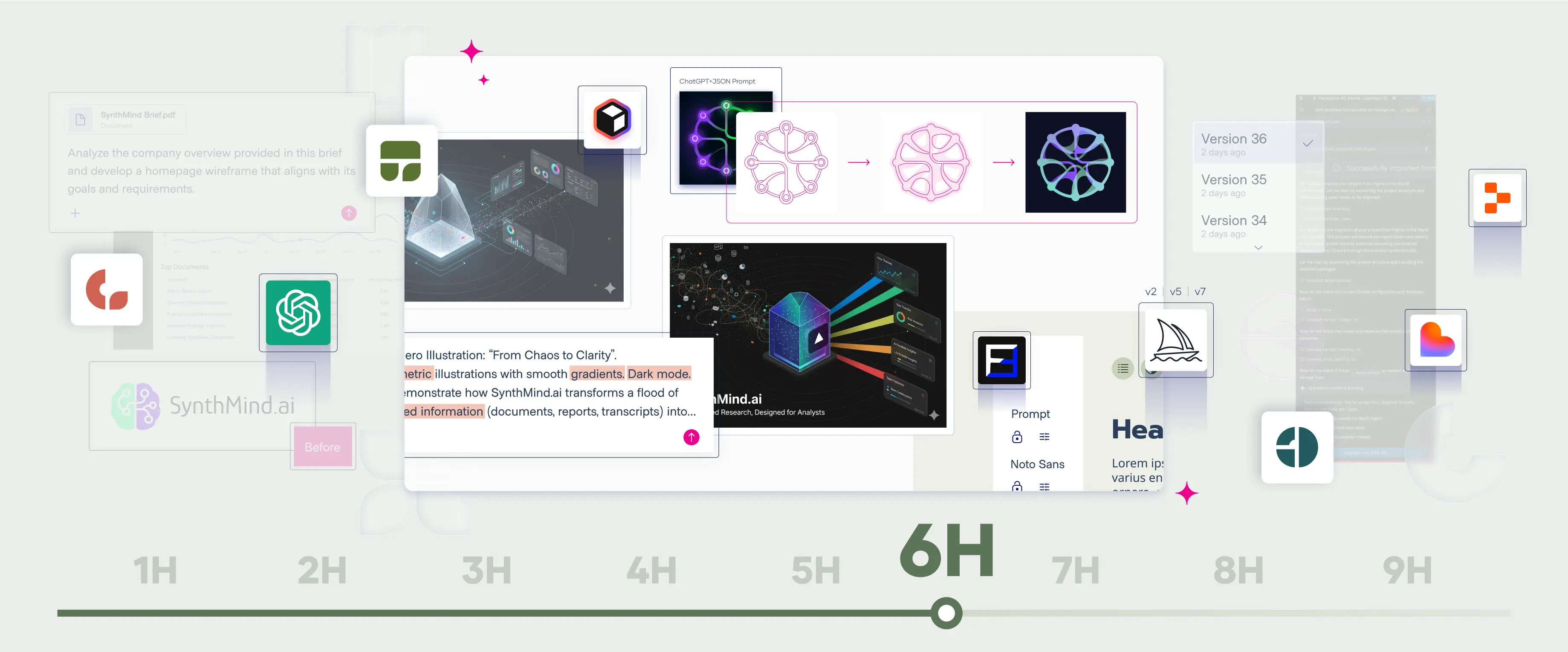
At Polar, we see AI not as a shortcut, but as a new creative layer - one that expands what design can be when technology and human intuition work side by side. The past months have been a deep dive into that idea: how AI can become part of our process without eroding what makes our work distinct, how it can amplify imagination rather than automate it. From reimagining the brand and website of Hush Security, to pausing client work for our first AI Hackathon, to refining how we keep visual consistency inside ChatGPT, our focus has been on learning how to design with AI - not just use it. The results reminded us that high-quality work doesn’t happen by chance or by prompt, but by the hands and eyes of a team that knows how to shape, direct, and elevate what AI brings to the table.
Last month, we hit pause on client work for something completely different - our first-ever Polar Hackathon. The theme was simple: explore how AI can accelerate and enrich our creative process when it becomes part of the entire workflow, not just a tool we use along the way.
The challenge was to create a complete, end-to-end brand and product experience for a fictional company, SynthMind.ai, including strategy, visual language, website, and interactive elements. Everything - from the client brief to the visual assets - was generated with AI tools, then refined, reinterpreted, and elevated by us.
It wasn’t about speed or automation, but about testing what happens when designers, developers, and AI collaborate as equals - each bringing something unique to the table.
The Visual Team began by analyzing the AI-generated brief using ChatGPT to extract the brand’s key ideas - interconnected nodes, intelligence, circular flows, and mind. This analysis helped us understand the logic behind the client’s original logo and the reasoning behind the name SynthMind.ai. From there, we created a new visual direction rooted in these principles.
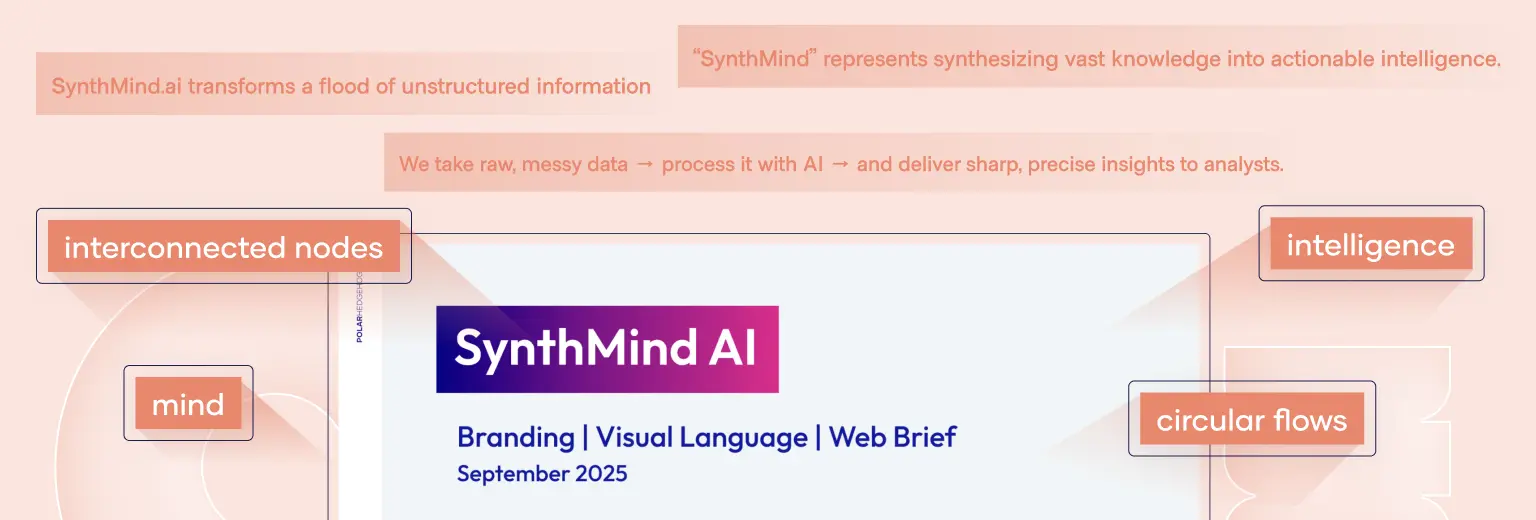
Next, using GPT, we crafted structured prompts to generate initial logo concepts in Midjourney, exploring different visual metaphors for connection and flow. Each iteration gave us a different lens on the same concept - from neural-like webs to more abstract, fluid networks. This stage was about experimentation and using AI to broaden the visual possibilities before we began narrowing them down.
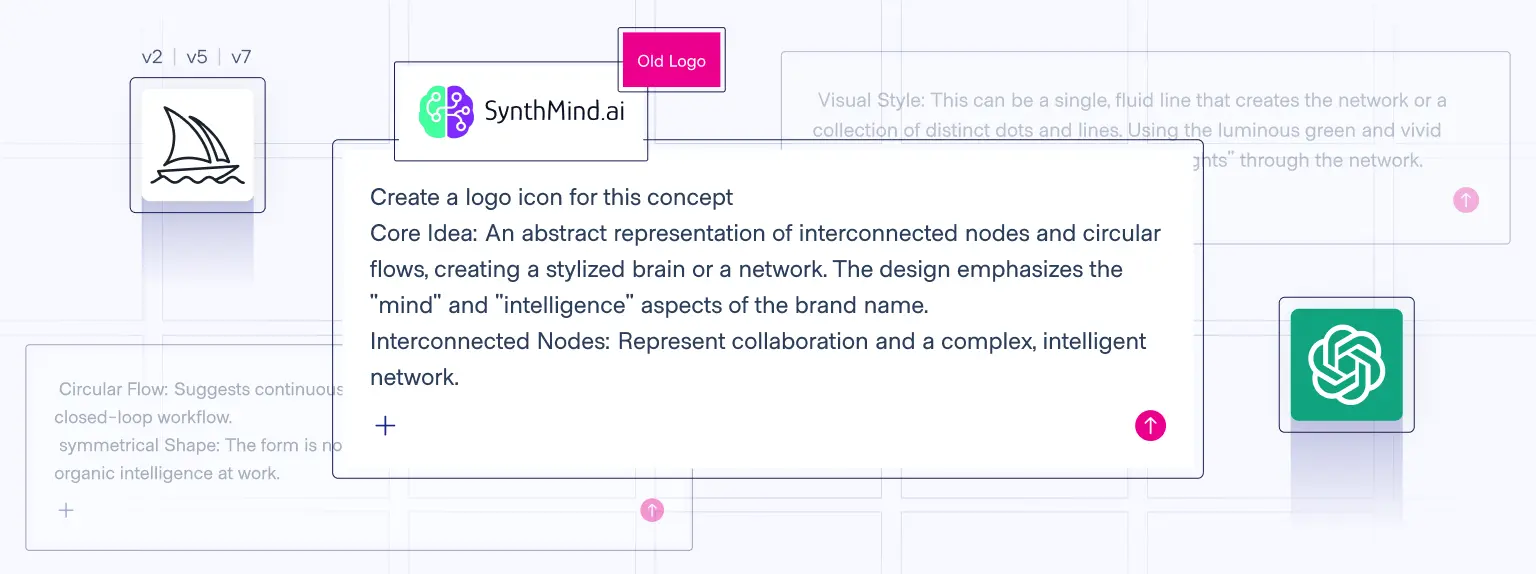
After selecting the most promising directions, we moved into Adobe Illustrator, where AI outputs became the raw material for real design work. We tested multiple JSON-based prompts, combining them with GPT variations to explore composition, geometry, and line flow. This phase was where AI’s precision met human judgment - connecting abstract forms back to brand strategy, refining edges, balancing weight, and ensuring conceptual coherence.
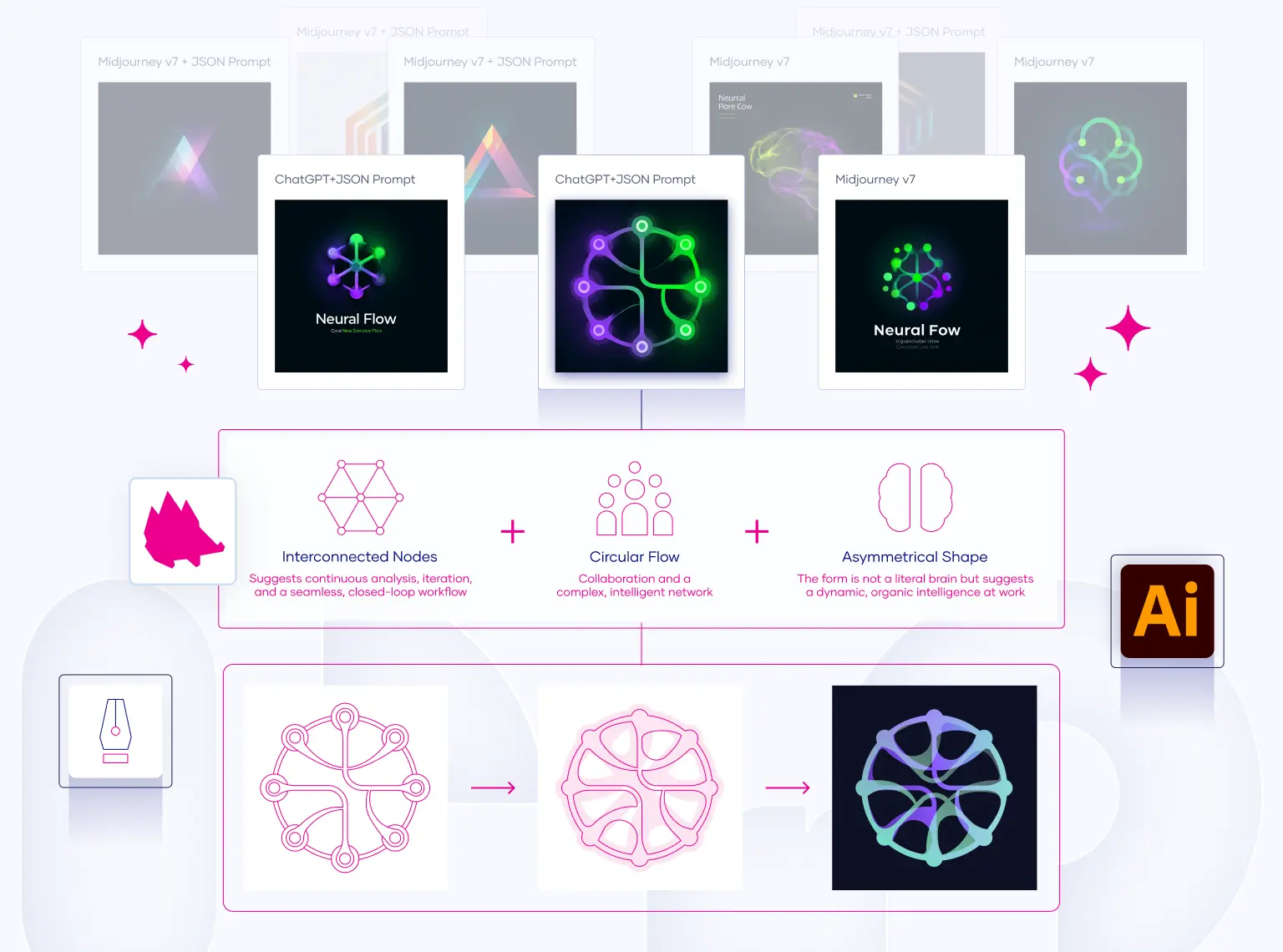
Finally, once we locked in the logo, we used tools like Nano Banana to visualize it in real-world applications. From team t-shirts to mock campaign shots, these AI-generated brand scenes allowed us to see how the identity holds up in context. They weren’t just mockups - they were a way to test the emotional resonance and usability of the new design.
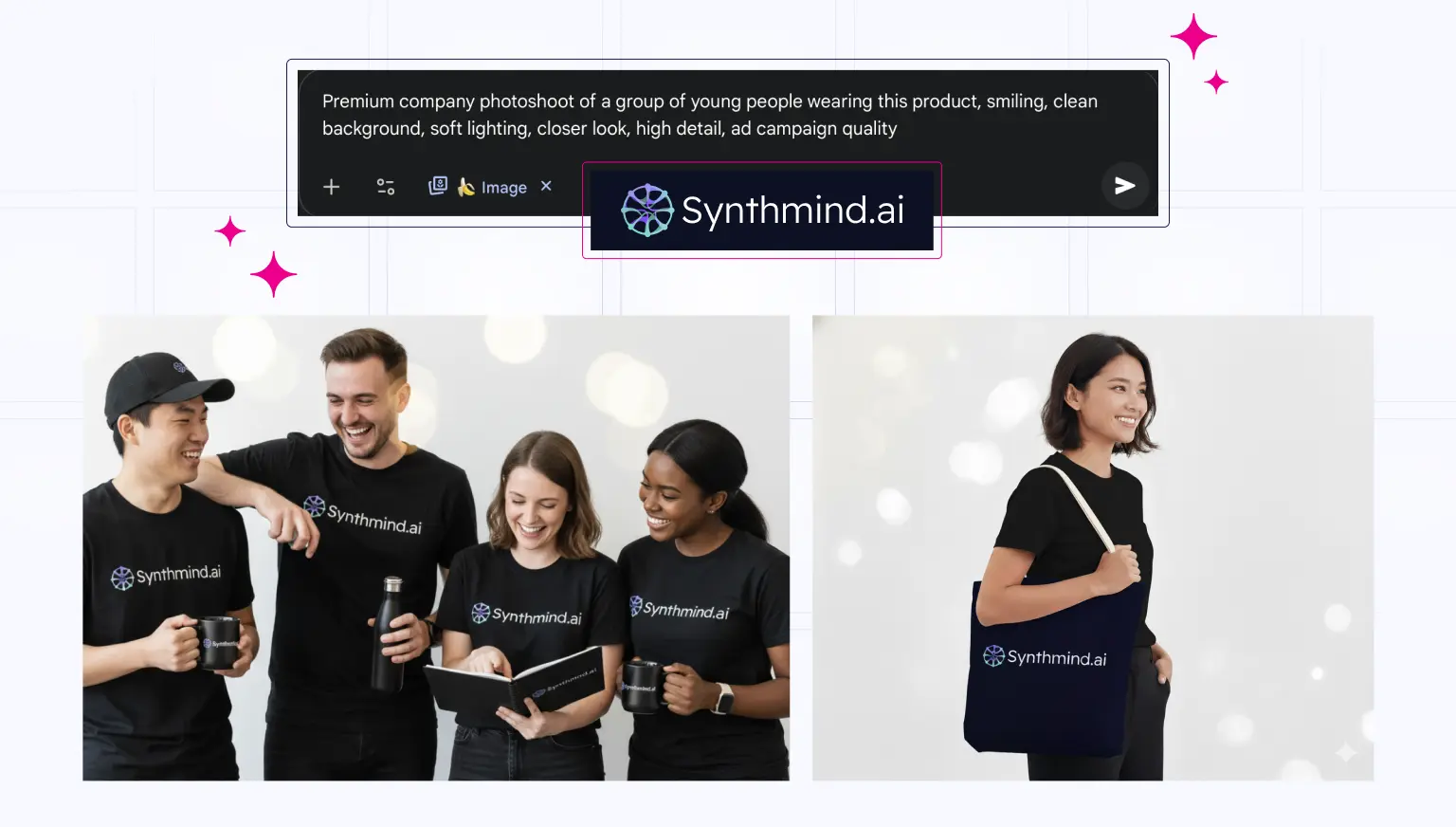
Through this process, the Visual Team proved how AI can serve as a creative partner - providing range and speed - but that achieving real quality still depends on design intuition, manual refinement, and cohesive vision.
The Web Team started with the foundation - the structure of the site itself. Using GPT’s integration with Relume, we generated both the sitemap and wireframes directly from the client’s brief. This integration allowed us to translate the document’s strategic goals into a clear structure, outlining the sections, hierarchy, and flow of content. The wireframes were easily imported into Figma, giving us a flexible base to start designing while keeping accuracy to the client’s needs.
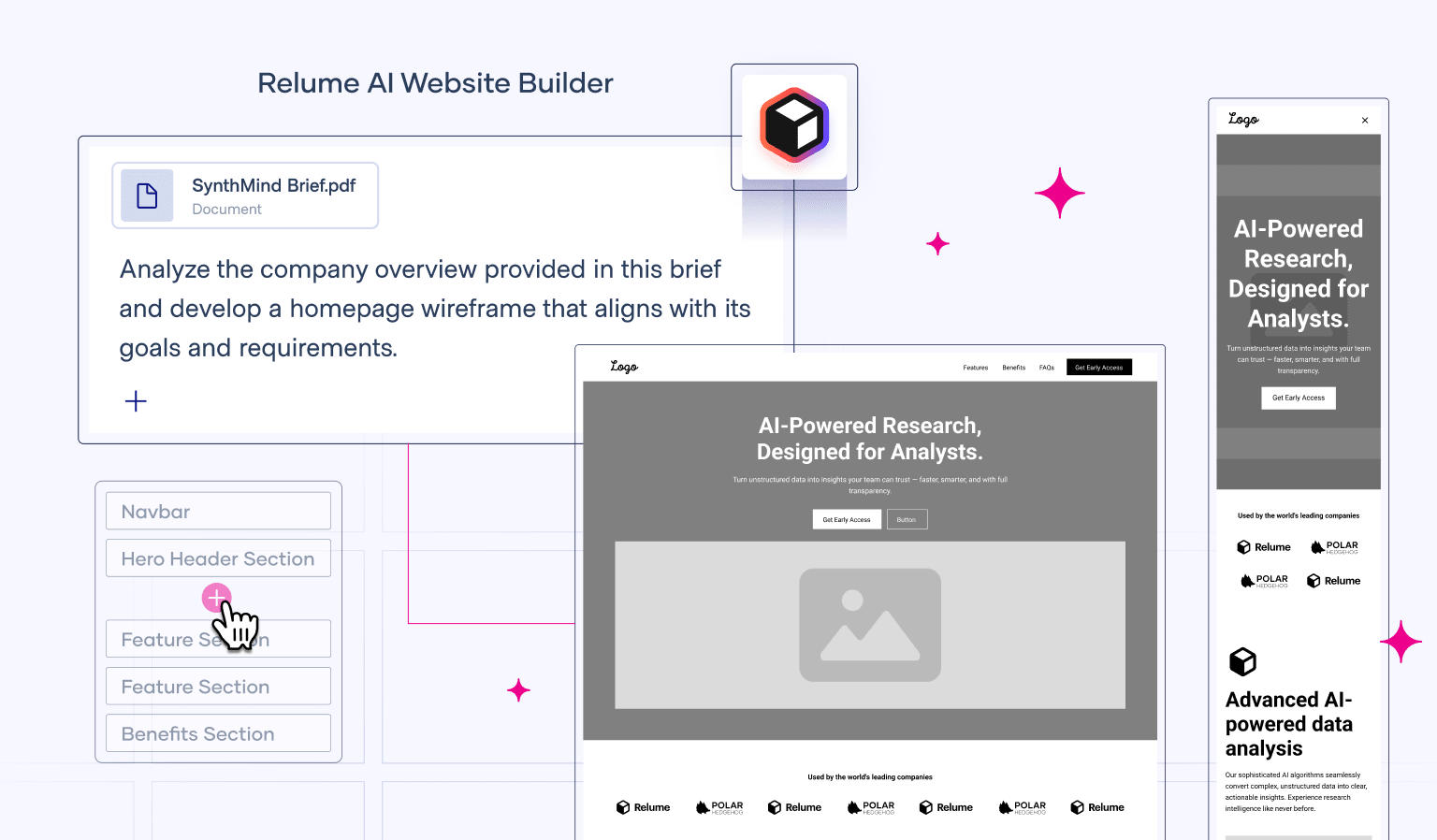
Once the structure was ready, we moved into crafting the hero section - the visual and emotional core of the page. Guided by the brief’s keywords and tone, we used GPT, Gemini’s Nano Banana, and Firefly to experiment with multiple hero image directions. Each tool produced its own interpretation, but Nano Banana delivered the most aligned result - true to the concept and visually cohesive. We then refined it manually in Figma, balancing the color palette, composition, and hierarchy to set the visual tone for the rest of the site.
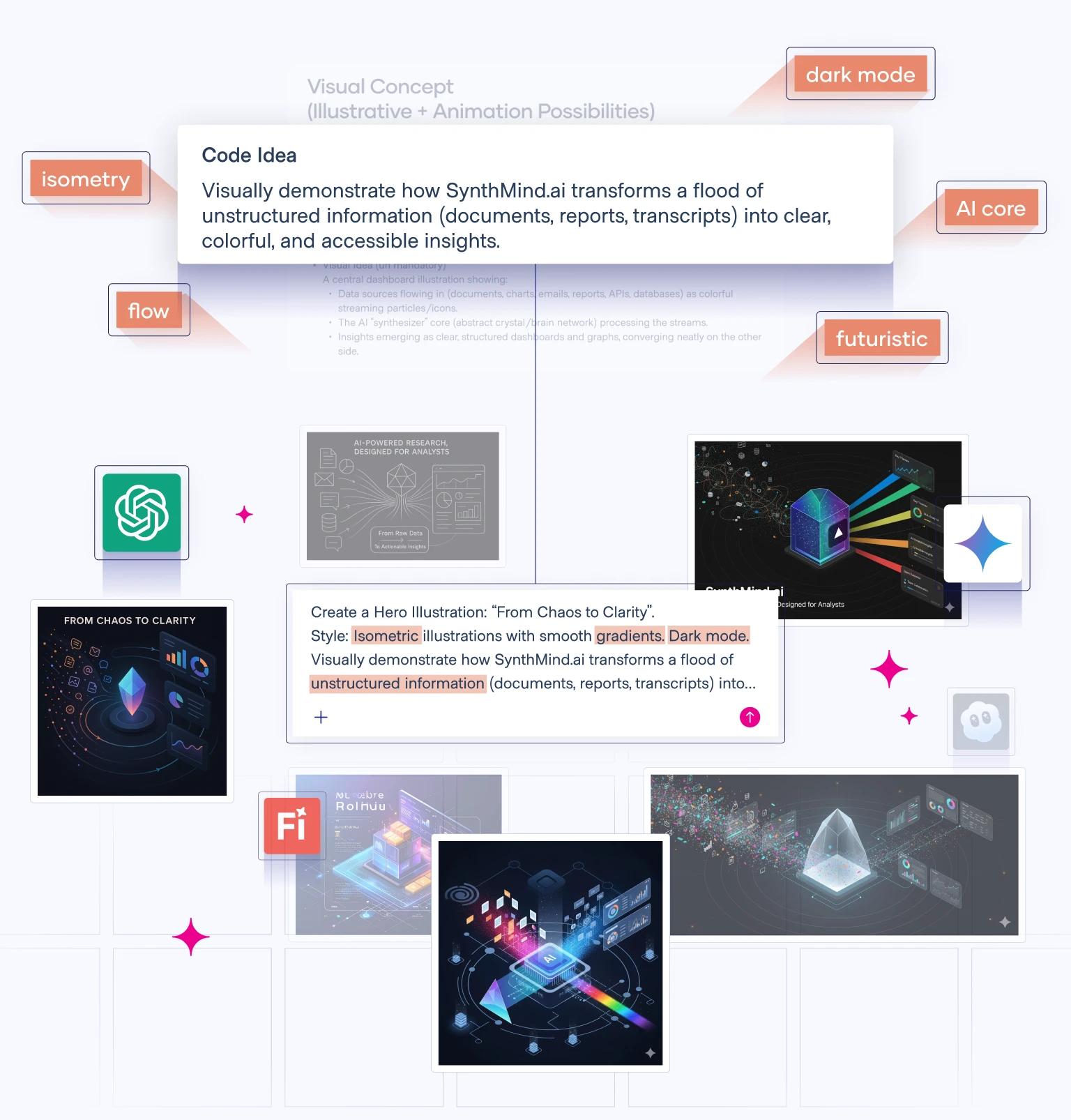
For typography, we turned to font-matching tools to explore pairings that could reflect both technical precision and modern clarity. The final choice - Prompt and Noto Sans - struck the right balance between structure and readability, perfectly complementing the visual direction and language established in the brief.
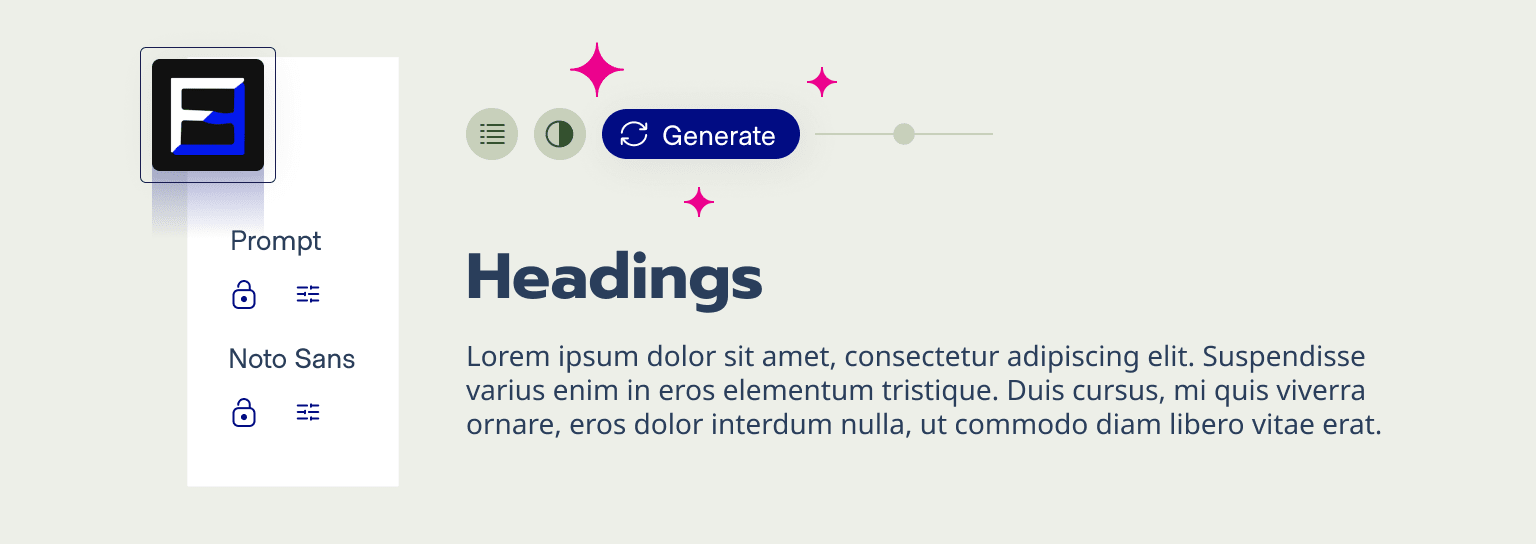
When it came to product visuals, we wanted the client’s actual interface screens to blend seamlessly with our website design aesthetic. We imported the hero image and product screenshots into Gemini, prompting it to create marketing-ready versions that matched our vision: isometric layout, redacted visuals, dark mode with a gradient overlay. While the conceptual results were strong, resolution quality remained a challenge - until we used Figma’s new AI-powered Boost Resolution tool, which helped achieve production-level sharpness.
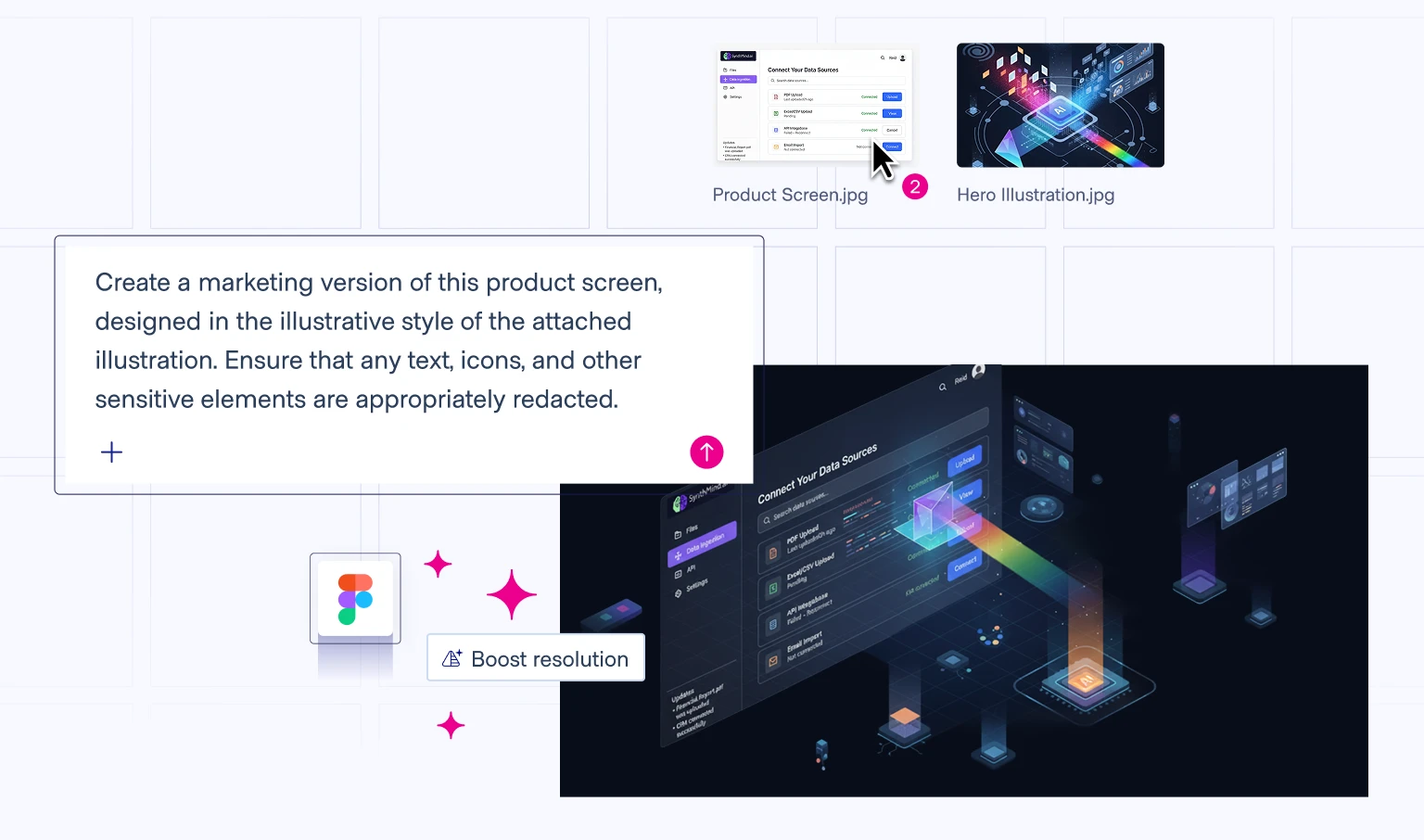
The final design was a complete, responsive webpage - consistent with the client’s goals, visually unified, and grounded in the creative strategy from the brief.
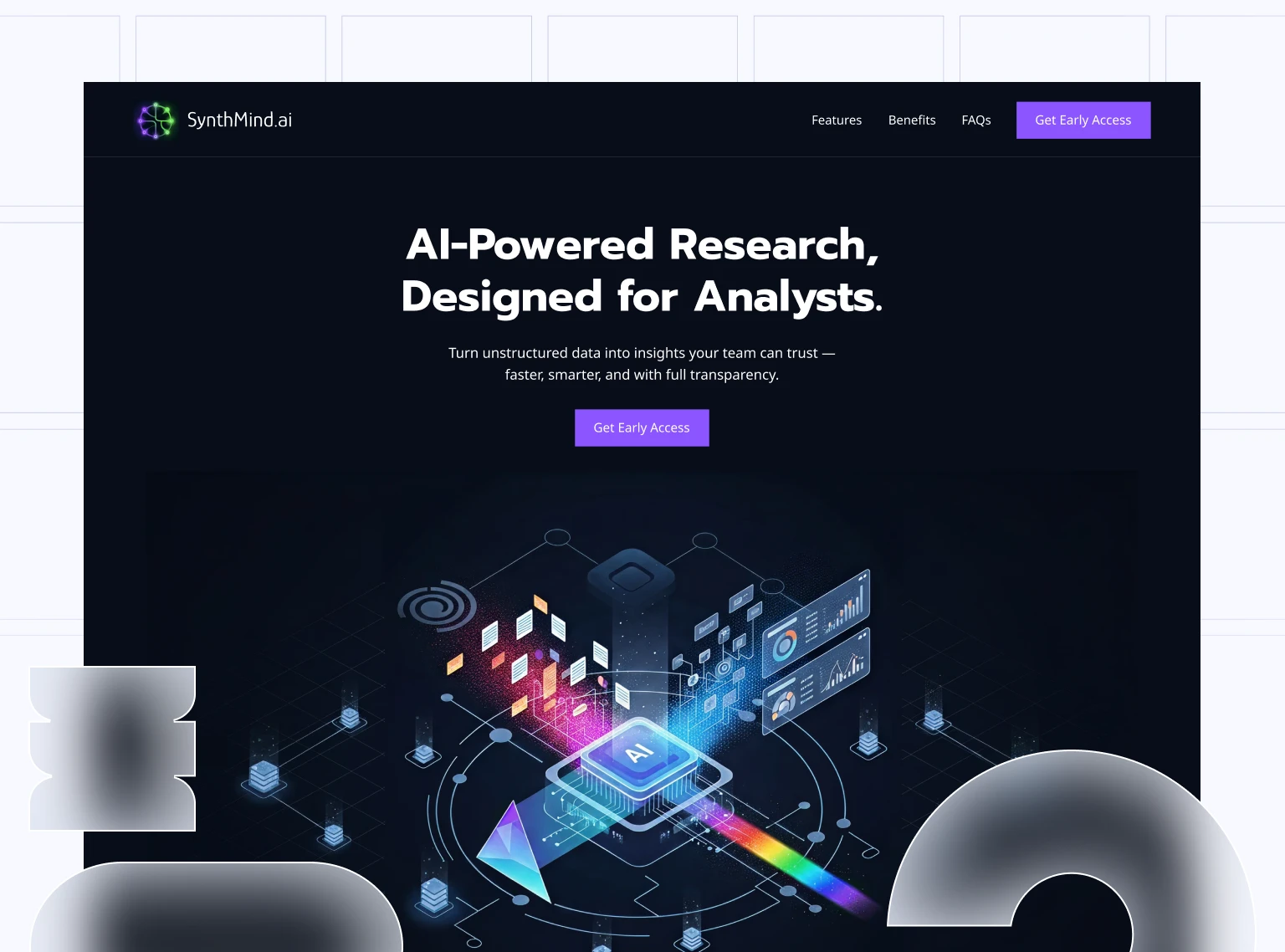
With the design in place, the team moved to vibe coding tools to bring it to life. We tested several platforms to evaluate how faithfully each could translate Figma designs into live code. Lovable, one of the more popular options, offered promising inspiration but lacked pixel-level accuracy even after several iterations. v0, on the other hand, performed far better - its versioning system made it easier to refine and compare outputs across iterations. Still, the most accurate and visually faithful result came from Replit, using its Figma integration to generate and refine code through multiple prompt cycles.
Each platform had its strengths and limits, and this process showed how much AI-assisted development still relies on human direction. No single tool got everything right - but together, they allowed us to design and build a full, functional homepage in a single day.
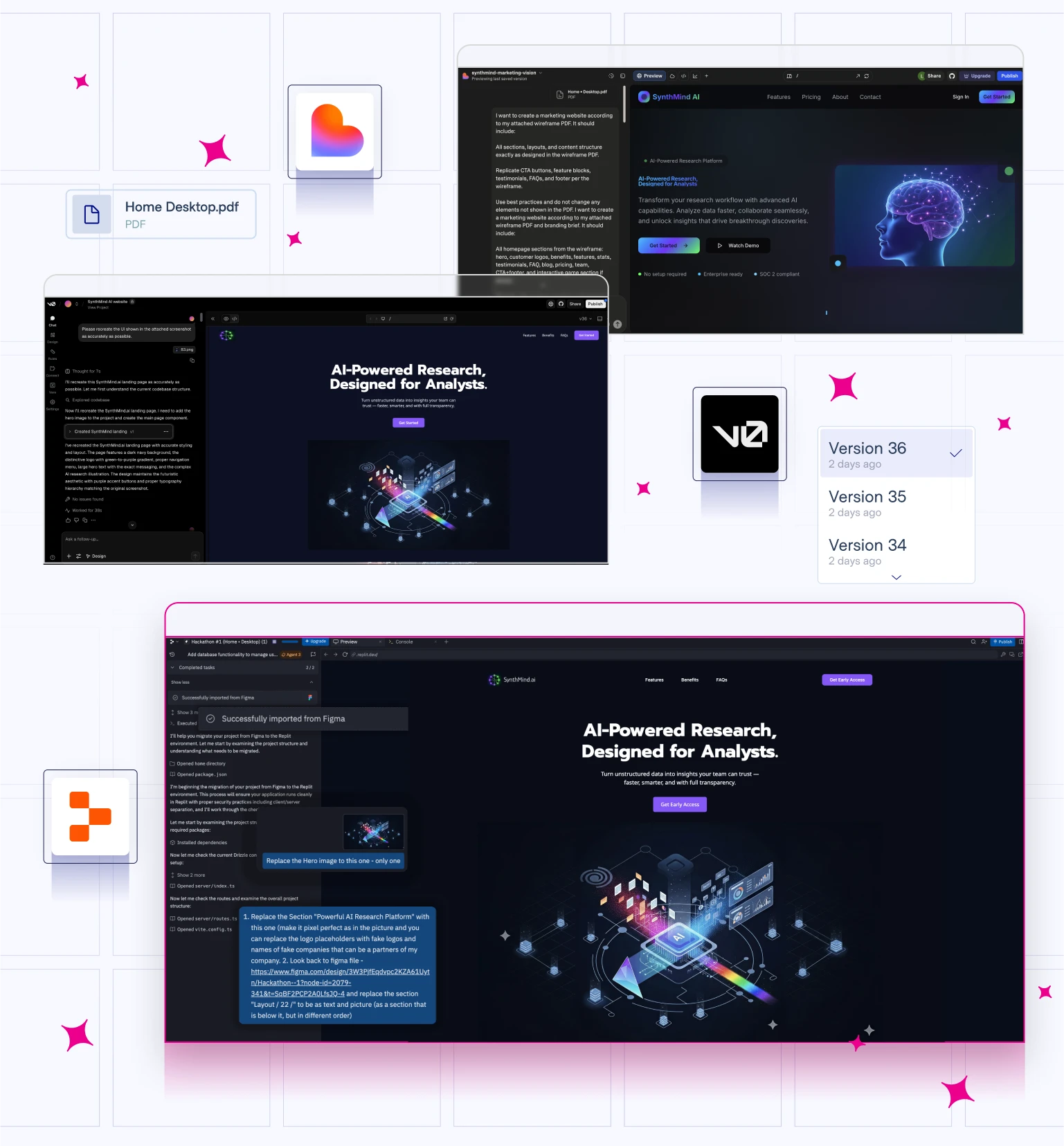
The Product Team took on the most experimental part of the project - creating an interactive, game-like component that would embody the client’s personality and add a layer of playfulness to the site. The client brief called for a moment of delight - something engaging, lightweight, and reflective of their product’s purpose.
We began by brainstorming ideas for games that could tie meaningfully to the company’s field of work. Using GPT, we explored several creative directions - from data-flow simulations to AI-powered logic puzzles - until we landed on the concept of a retro-inspired mini-game that visualizes how SynthMind.ai processes information. The goal was to make something fun, nostalgic, and informative, blending storytelling with interactivity.
From there, the real experiment began. Using vibe coding tools, we built the prototype directly in Replit, guided by prompts that translated design intent into functional elements. We added motion, interaction, and even sound effects to enhance immersion - all while keeping the tone consistent with the SynthMind brand and visual system.
The final result was an 80s-style interactive experience - a small but expressive moment within the website that captures the essence of what the company does: turning complexity into clarity through intelligence and play. It showcased not only what’s possible when AI and design meet, but also how imagination and experimentation can turn a static page into an experience that feels alive.
👉 Play SynthRunner Here
👉 Play SynthRunner V2 Here
For a single day of work, the results were remarkable - a full visual identity, an interactive site, and even a playable prototype. But that wasn’t the real win. The value of this hackathon wasn’t in the final outputs, but in the process - in learning through making, testing how far AI can stretch our workflow, and discovering where human intuition remains irreplaceable.
AI made things faster, more connected, and at times, almost magical. Yet it also reminded us of what defines great design - refinement, taste, and direction. Those come not from algorithms, but from people who sense when something feels right, and from teams who know how to turn raw, machine-made material into meaningful work.
The hackathon proved that while AI can accelerate timelines, it can’t replicate creativity. It’s a collaborator, a catalyst, and sometimes even a co-designer - but the spark, the intention, and the craft still come from us.
Here’s to more experiments, more shared learning, and a future where AI doesn’t replace design, but helps us imagine what’s next together.
We began working with Hush Security back when they were still operating in stealth mode - crafting their early logo, color palette, and visual foundation. That first stage defined how their identity lived across presentation decks, social media, and a minimal one-page site built to hint at what was coming next.
A few months ago, as Hush prepared for their public launch, they returned with a bold new mission - to communicate a complex, transformative idea: a world where secrets no longer need to exist. Our task was to evolve their visual language to match that ambition, creating a mature, confident brand and a digital experience that embodies the same quiet intelligence as their technology.
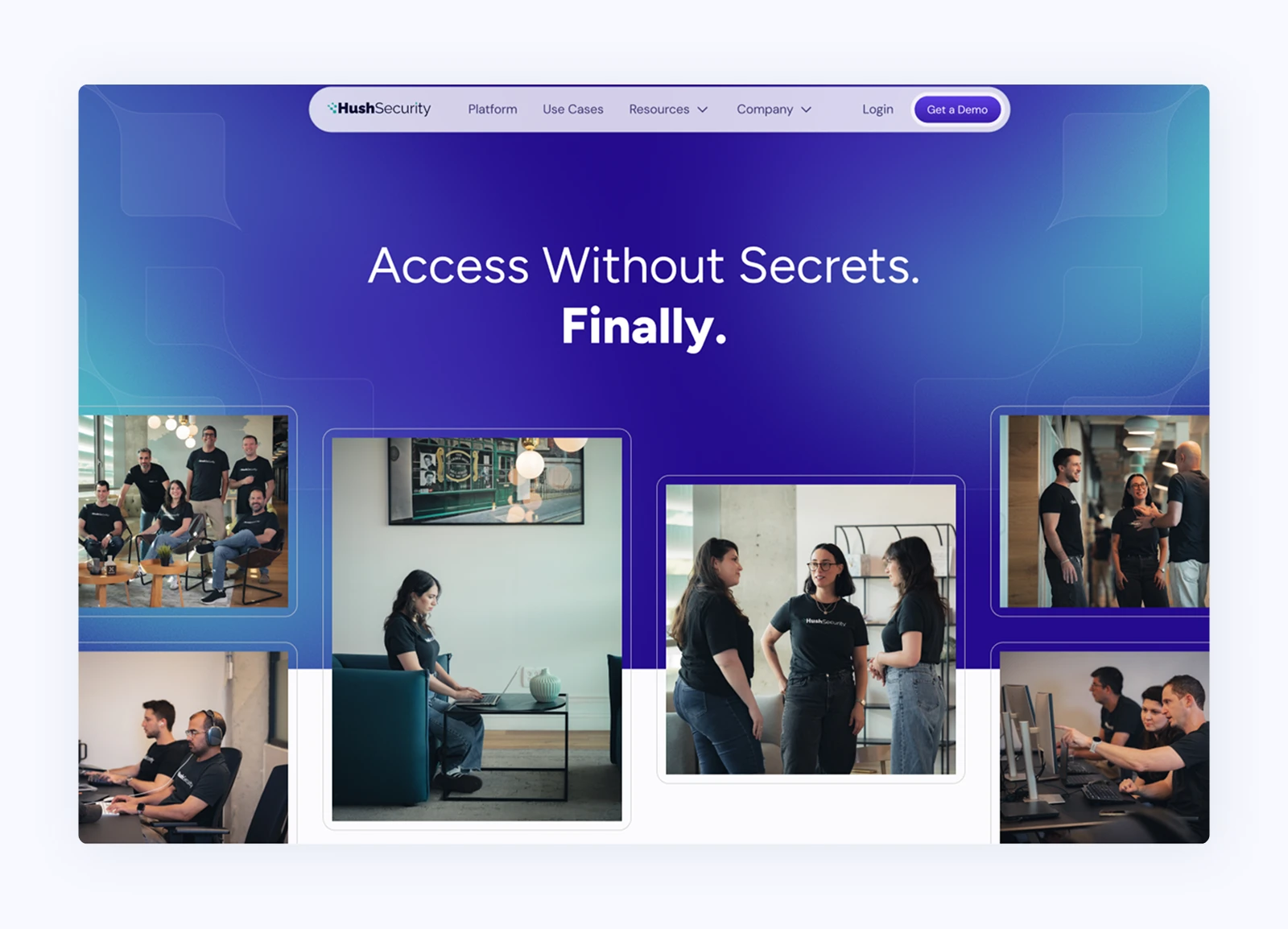
What began as a stealth landing page evolved into a full-scale design system and interactive website - built to reflect precision, depth, and control at every level.
.webp)
In case you missed it, a few weeks back, we shared a new blog post about how we’re using ChatGPT to keep visual consistency across AI-generated images.
At Polar, we often work with startups that need to move fast without losing their visual identity. Most image-generating tools can produce a good single result, but struggle to stay consistent across styles and use cases.
That’s why our web team built a simple, scalable workflow inside ChatGPT using JSON-based style prompts, a system that captures a brand’s look once, and applies it again and again across illustrations, blog covers, and social visuals.
It’s a small step that transforms AI from a novelty into a real design tool, one that protects brand integrity while keeping up with startup speed.
